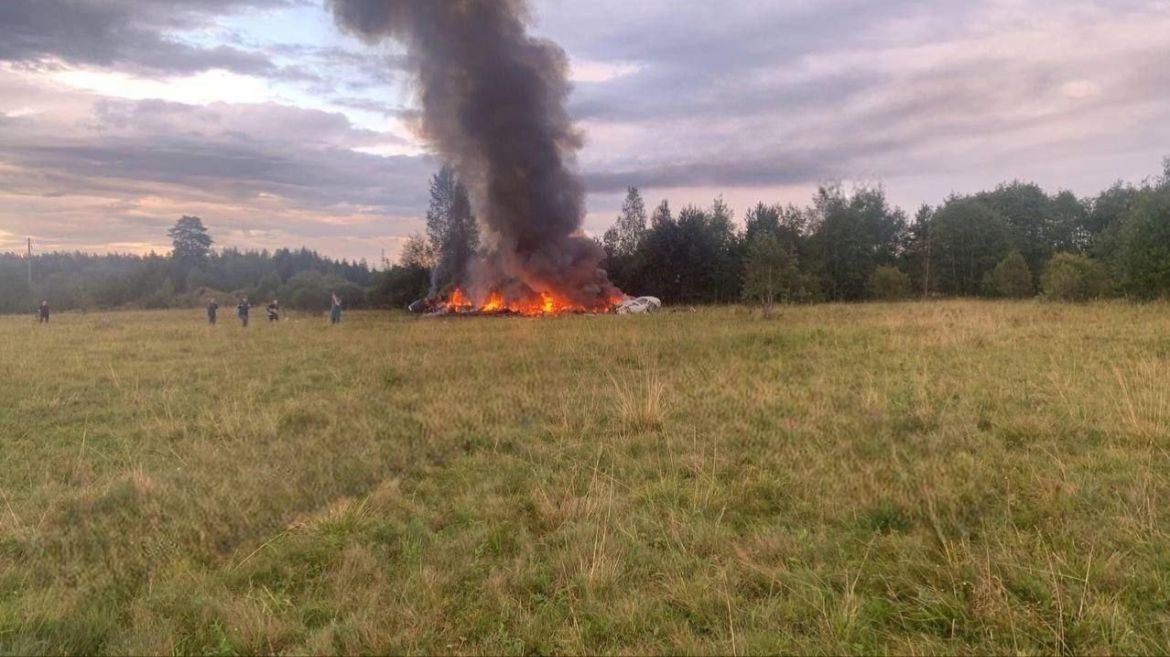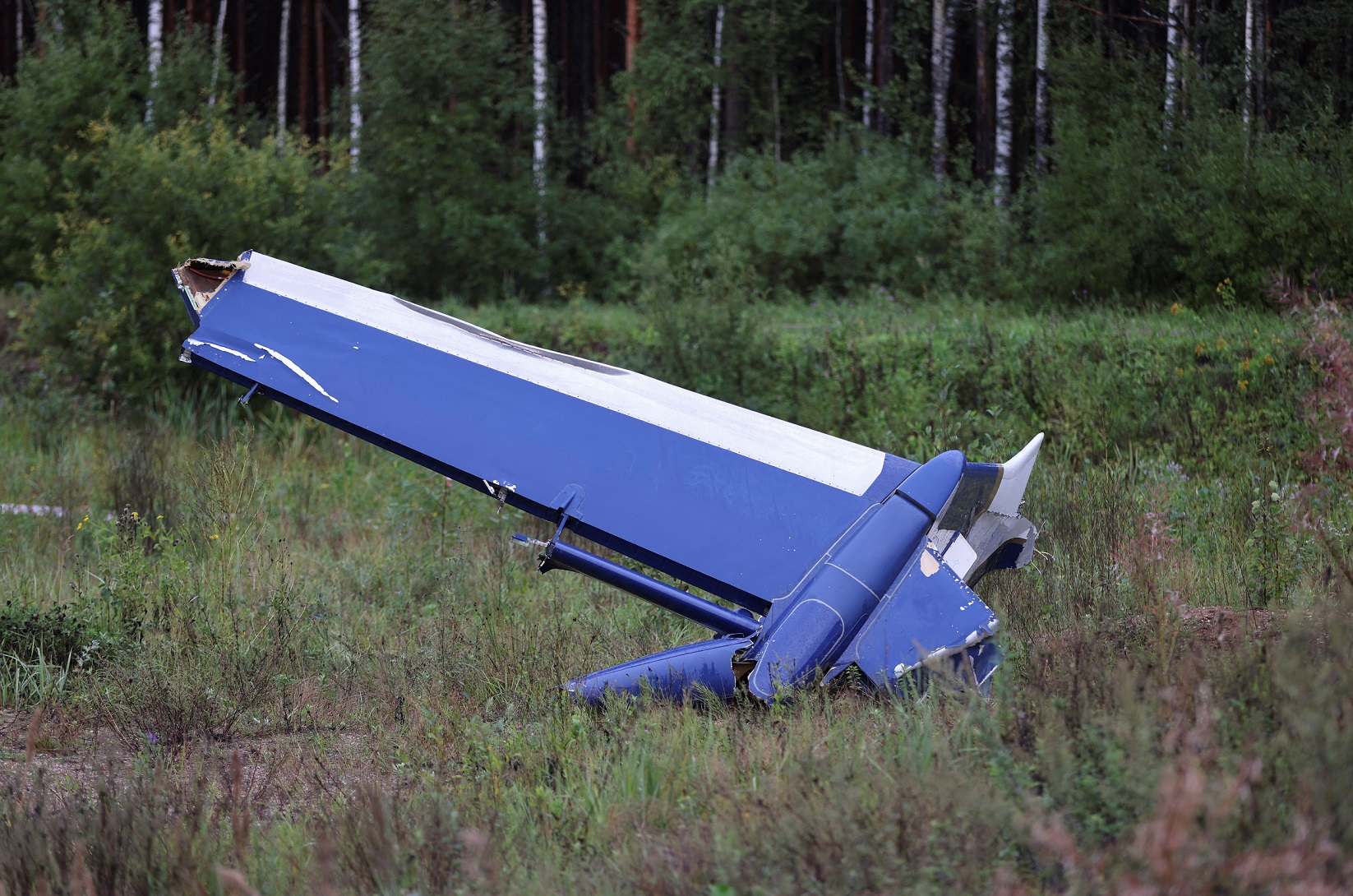Publications
INSS Insight No. 1762, September 5, 2023
The plane crash that killed Yevgeny Prigozhin raises several questions about the Russian establishment: What is the future of the Wagner Group? Is the Russian defense establishment stronger in the aftermath of the crash? Has President Putin regained the control and honor lost in the mutiny by the Wagner Group in late June? Apparently in the short term, the regime’s deterrence will indeed work. It is doubtful, however, that it will suffice as the basis for running a country – especially given the situation that currently engulfs Russia.
On August 23, 2023, exactly two months after the Wagner Group launched their mutiny, the plane carrying Yevgeny Prigozhin, Dmitry Utkin – Prigozhin’s right hand man and the group’s military commander – and several other senior members of the organization crashed following an explosion shortly after it took off from Moscow to Saint Petersburg.
The two main theories as to the circumstances of the crash are that a pre-planted bomb exploded aboard the plane, or, alternatively, that it was destroyed by an anti-aircraft missile launched from the ground. According to Russian authorities, the bodies of all 10 passengers and crew members were discovered and identified. Setting aside the speculation that Prigozhin was a master of deception and disguise who used doubles and people with the same name, it seems highly likely indeed that the leader of the Wagner Group and its senior commanders were killed in the crash.
There is little doubt that the main people interested in eliminating Prigozhin were senior members of the Russian political and military establishments – first and foremost Putin himself; after the mutiny earlier this year, Putin said that he “does not forgive treason.” Members of Russia’s internal security services, charged with safeguarding the stability of the regime, would also have had an interest in Prigozhin’s exit from the scene, as would Defense Minister Sergei Shoigu and Chief of Staff Valery Gerasimov, who were subjected to personal attacks by Prigozhin last year. It is also possible that the plane was downed in revenge for the deaths of Russian airmen who were killed during the Wagner Group mutiny.

The uncertainty regarding the motivation of the killing notwithstanding, it is possible to discuss its immediate impact and ramifications. On the political level, Prigozhin over the past year had become a populist actor, enjoying a notable base of support among the Russian people. As he was a sole representative, his death put an end to any political potential. On the military level too, the Wagner Group has been decapitated and is no longer an independent actor with its own political logic. Since Prigozhin ran the group alone, while fully maximizing his public image and his multiple connections within the Russian system and beyond, it is safe to assume that without him (and Utkin), the organization will no longer be capable of running itself. Given the absence of any senior public leadership that could offer its soldiers any employment, ideological, or political framework, the assumption is that what remains of the Wagner Group – a camp in Belarus, emissaries in Africa, and the demobilized force that have been furloughed across Russia – will likely be dispersed and absorbed by the Russian security establishment in one way or another.
Dismantling the Wagner Group
After the mutiny, the Wagner forces – up to 25,000 soldiers on the eve of the mutiny – split into four parts. First, some of the fighters apparently signed contracts with the Russian Defense Ministry and left the group. Second, because the group’s sources of income and infrastructure were damaged following the mutiny, Prigozhin sent many fighters to an extended furlough across Russia, and they still have not been recalled. Another group of fighters – estimates put the number at several thousand – relocated to Belarus, where they remain to this day, having set up a military camp and relevant infrastructure. It appears, however, that this camp has shrunk gradually since early August. Their presence there is coordinated with Belarus leader Aleksandr Lukashenko, who has his own reasons for agreeing to this: members of the Wagner group have been documented providing training for Belarus military. The presence of the Wagner Group in Belarus led to increased tensions with Poland and Lithuania, following alleged provocations by its troops close to the border. While it is not clear who initiated these incidents, it does appear that the group’s operations have been coordinated with Lukashenko.
Another core of Wagner Group fighters is currently in Africa. After the mutiny, following a short period of uncertainty over the future of control of assets in Africa and official Russian involvement with various African governments, fighters from the group were sent to reinforce the troops already there. Since the end of the previous decade, Wagner has been highly active in the Central African Republic, Mali, Libya, Sudan, and additional countries. Most recently, the military junta in Niger, which late last month ousted the president, asked the Wagner Group for military aid as well. Wagner fighters provide security for senior officials in many countries and protect natural resources production mines; they also provide training to local forces. While it is not clear whether there are significant numbers of Wagner Group fighters in Africa, in his last video, released on August 22, Prigozhin said that the group was focusing its efforts on that continent.
The two groups that remain part of the Wagner Group framework – the Belarus contingent and the African contingent – will likely be targeted by Russian security bodies, which seek to integrate them in establishment frameworks and dismantle their independent organizational identities. In the case of Africa, it seems that the primary actor will be the Ministry of Defense, while in Belarus, it is possible that Lukashenko himself would be happy to get hold of this experienced manpower. Assuming that it was Lukashenko (possibly in coordination with Russia) who ordered the Wagner Group operations close to the border with NATO countries, it is also possible that he will continue to use them to pressure the West, as long as he continues to see that as a useful tactic.
Without Prigozhin and Utkin, the Wagner Group will in all likelihood cease to be an independent political-military force and become a source of manpower for various private military companies owned by the Russian establishment, its security forces, and perhaps even the Belarus military. In the most extreme case, tiny anti-establishment cells could emerge, with no significant operational capabilities against the regime. Accordingly, it does not seem likely that the group will launch any coordinated operations against the Russian establishment in revenge for the killing of its leaders.

Dissipating the Threat from the Right
Prigozhin is not the only figure who has been removed from the military-political map since the Wagner Group mutiny. On the same day as the plane crash, it was officially revealed that Sergey Surovikin, Prigozhin’s senior ally within the ranks of the Russian army and someone who was suspected of knowing in advance about the planned rebellion but did nothing to prevent it, was removed from his position as Commander-in-Chief of the Russian Aerospace Forces. In addition, dozens of senior generals were arrested in the aftermath of the mutiny, including Surovikin’s deputy, Andrei Yudin, and the deputy head of Military Intelligence, Vladimir Alexeyev. None, it seems, have returned to their posts. In July, two combat generals fighting in Ukraine – the commanders of an army and a division – were removed from their positions for criticizing their superiors and how they conducted the combat.
In addition to the dismissals in the military, after the mutiny the Russian regime also launched a crackdown against the far-right, pro-war camp, which has been highly critical of the establishment, accusing it of hesitation and circumspection. One of the main spokespeople for the movement, Igor Strelkov (Girkin), was arrested and jailed (although he continues to criticize Putin and even proposed himself as a candidate for forthcoming president elections). Another prominent spokesman for the movement, Vladimir Kvachkov, was fined – usually the first step before detention and a criminal investigation. A few months prior, the establishment also managed to take control over most of the patriotic bloggers and “military journalists” (voenkory, in Russian) who report from the front lines, in order to limit exposure of the army’s failings and shortcomings.
Now, from the perspective of Russia’s top security echelon, the root of the discord within the military and paramilitary systems has been resolved. The emergent centers of power and influence – both the spokespeople who have an audience and the military commanders – have been neutralized or co-opted into the system (as in the case of the many military correspondents). The standing of the chief of staff and the defense minister, who were criticized harshly before the mutiny, has risen again at the expense of their rivals and critics, who were dispersed among “exiles” in the army, the jails, or in the case of Prigozhin himself, over the skies of the Tver Oblast. Putin and his associates apparently believe that an unstable Russian military-security machine which faced domestic and external criticism, has been returned to its natural balance.
Clearly the plane crash did not take any member of the Russian elite by surprise. On the contrary, it was seen as further proof that anyone who dares to threaten the establishment will not evade retribution. Even if the assassination was not approved by the Russian president, it is hard to imagine him hunting down the people who ordered and carried out the operation against someone that Putin himself, in a special television broadcast as convoys of Wagner Group troops were rolling toward Moscow, called a “traitor.” Putin sent a clear and threatening message to any potential challenger, but the patently illegal killing of Prigozhin – and especially the inability to articulate the message directly (after all, Putin sent his condolences to the families of the victims and even eulogized Prigozhin) – strengthen the trend of Putin’s regime moving further and further away from the norms and understandings embedded in others. Without the will of the establishment, the elites in Russia are told that they cannot count on Putin to reach understandings with them, and that if anyone suspects that he is perceived as disloyal, one’s only option is to go “all in,” without trying to make halfway deals with Kremlin.
The establishment, however, did not guarantee its security with the move. Although the “threat from the right” has been resolved for now, managerial stagnation – that it, maintaining the status quo – and the unwillingness to accept criticism and make healthy changes are likely to drag Russia into additional crises, which has been under unprecedented military, economic, political, and social pressure since its invasion of Ukraine. These crises could be the result of future military failures (which depend on Ukrainian success) or as a result domestic disturbances, whose roots are still too early to predict.



